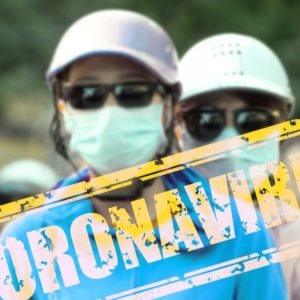An important anniversary has slipped by. It was last January, the year 2020, while visiting Hong Kong for a few days, that I started seeing stories about a strange new virus diagnosed in the industrial Chinese city of Wuhan. The first headlines didn’t seem like a big deal. Some “experts” were saying the virus had been found in Wuhan and nowhere else.
Still, those early reports did kindle memories. No one forgot SARS, the severe acute respiratory syndrome that erupted in China in 2002. That dread disease scared the hell out of people around the world. By the time the last case was diagnosed in 2004, more than 8,000 people had caught it, and 11 percent of them had died.
Then came MERS, the Middle East Respiratory Syndrome, which broke out in Saudi Arabia in 2012, infecting upwards of 2,500 people, more than 800 of whom died. Remote, confined, this disease was easily forgotten as another obscure acronym. If you’re visiting one of those middle eastern countries, be sure not ride a camel, blamed for spreading it. Otherwise, not to worry.
Next: the Ebola virus, limited largely to west African countries. Named for a river in the Congo, Ebola raged for about two years from 2014 to 2016. More than 28,000 people caught the disease, at least half of whom died, but only a handful of cases were diagnosed outside the region. One simple lesson: when visiting Africa, don’t eat bush meat, no telling what nasty viruses those wild animals are carrying.
SARS and MERS also had tragic consequences, but no one you knew by the time the first cases were reported in the U.S. and Korea had caught the bug. Surely, you believed as you glanced at the papers, this variant they called COVID-19, for coronavirus disease 2019, would not be any worse.
On about the third or fourth day of my five days in Hong Kong, I noticed quite a few were covering their mouths and maybe their noses with face masks, but many were not. I was having trouble getting used to wearing one.
The Hong Kong media were preoccupied with the flickering and flaming “democracy movement,” and slogans for democracy were smeared on walls in Chinese and English. Speculation that COVID-19 might spread beyond Wuhan seemed overblown. Surely it would blow away. Calls for rights and freedom from the rulers of Beijing seemed more important.
By the time I got to Seoul, the first cases were being reported in Korea and also in the U.S. Wow. How did that happen? In February, just a year ago, journalists rushed down to Daegu, a major city southeast of Seoul, after an outbreak was reported among members of the cultish Shincheonji Church of Jesus. Seemed they had been standing close together at a gathering in Wuhan, singing and praying and spreading the faith.
Naturally, I had to see the office building in Daegu where the church had its headquarters, now tight shut. My taxi driver didn’t want to wait. In fact, he was in a hurry to leave. On the road behind the church, a doctor in white protective gear, working from a van, was collecting samples of dust and dirt. Funny, he didn’t want to hang around either.
If it took me a while to realize the seriousness of the disease, back in Washington President Donald Trump was even slower. How many times did he tell us it would blow away by summer? Stupidly, he suggested maybe the household disinfectant Lysol might be a panacea. Maybe he was joking, but such banter showed he didn’t have a clue.
The World Health Organization wasn’t too swift, either. On March 9, Tedros Adhanom, former Ethiopian health minister, whose doctorate is in community health, not medicine, proclaimed COVID-19 a pandemic. That realization didn’t slow the disease, which hit Italy harder than anywhere else before spreading throughout Europe and the U.S., where our obtuse president went on making light of the disease even after getting a touch of it himself.
Trump, still clueless, preferred to marshal his fanatic followers behind him for a second term rather than lead the charge against the disease. A year after I first heard about COVID-19, Americans are paying the price for this tragic misjudgment that cost him the election – and the lives of more than 400,000 Americans and counting.

